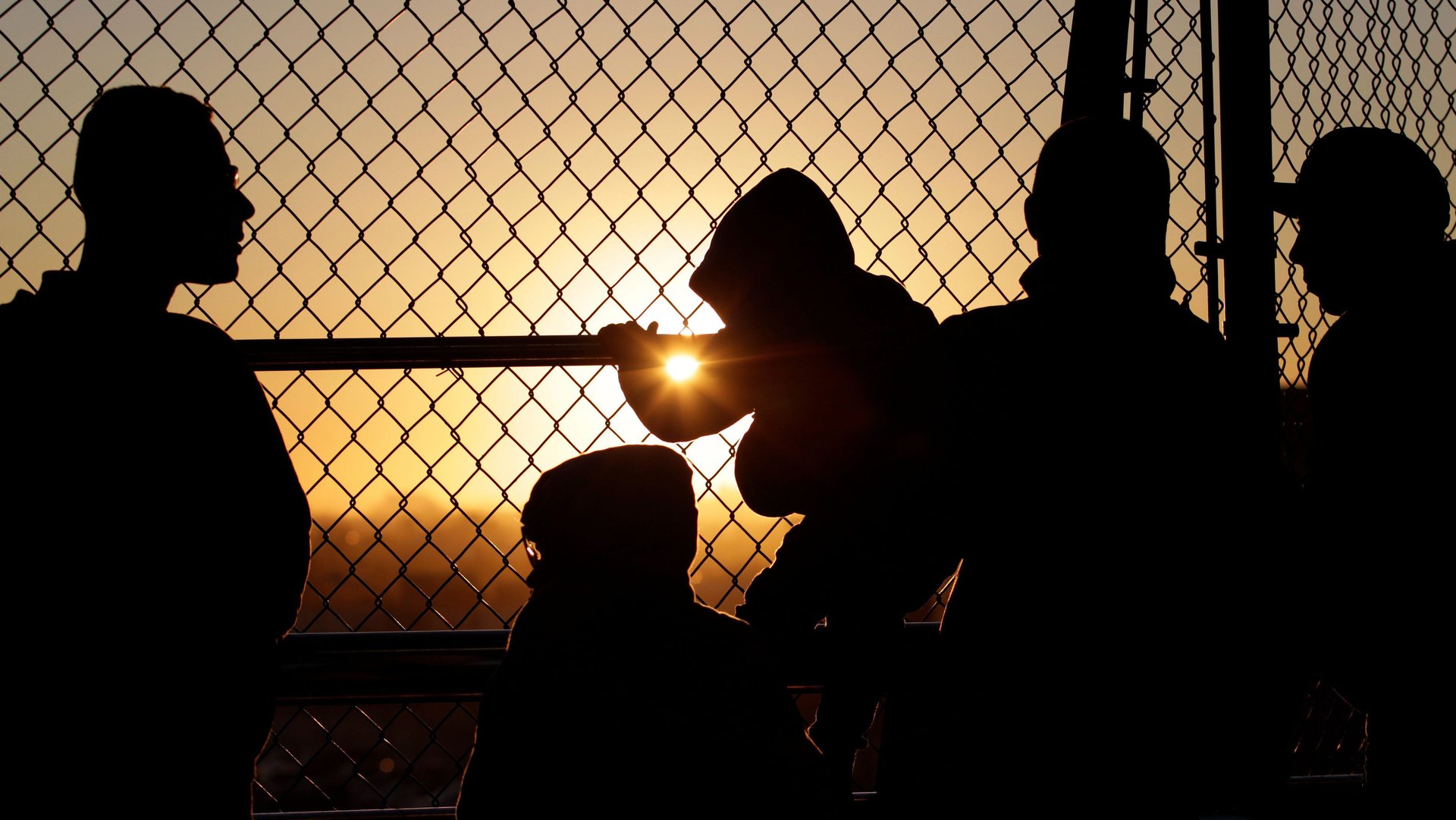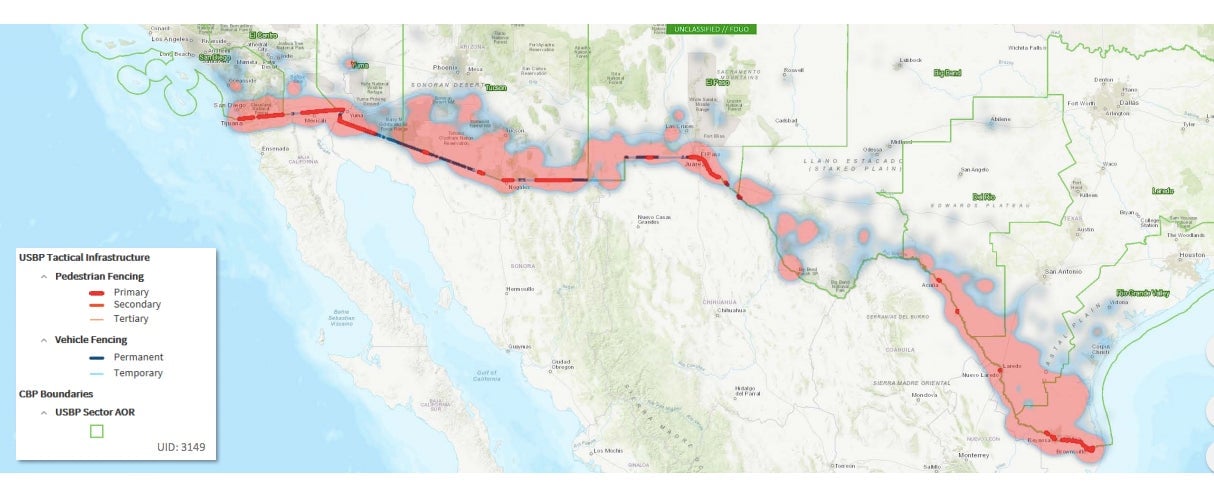Six hard facts about a border wall that contradict Trump
Donald Trump will speak tonight in his first official Oval Office address, to address US immigration issues and his demands to build a wall on the border with Mexico.


Donald Trump will speak tonight in his first official Oval Office address, to address US immigration issues and his demands to build a wall on the border with Mexico.
The US government has been shut since late December, after Trump refused to sign funding bills that had initially passed the House and Senate to keep it open, because they didn’t include $5 billion in wall funding. Nearly one million Americans aren’t getting paychecks and millions others are inconvenienced in ways large and small because of the shutdown.
The Trump White House insists the immigration situation at the US border is a “crisis” but the facts from law enforcement, drug-trafficking experts, immigration lawyers, and terrorism specialists offer a different view.
Here is how the facts line up against the myths the president has been perpetuating:
1. The undocumented are crossing the border at historic lows
Almost no one involved in immigration issues on the US’s southern border thinks the situation is good. US Customs and Border Protection apprehended about 400,000 people during the 2018 fiscal year. While that’s a lot of people, the number isn’t, historically, a crisis. It is much, much lower than it used to be just 15 years ago.
In particular, the number of Mexican migrants attempting to cross the border illegally has dropped dramatically—driving down the number of overall number—as the Mexican economy has improved.
What is increasing, however, are the backlog of people applying for asylum on the US border—despite Trump administration attempts to shrink it—and the backlog of immigration cases waiting to be heard by the Justice Department, in part because of the administration’s uptick of arrests of immigrants in the US.
Thanks in part to a Supreme Court decision dating back to the late 1800s, those people are guaranteed the exact same rights as US citizens. Hiring more lawyers and administrators to give them due process—not funding a wall—could reduce the backlog.
2. Heroin from Mexico is a big problem. A wall won’t stop it
Trump is right to identify drug trafficking as a growing problem, as Quartz wrote earlier, and overall seizures of certain drugs in the US—heroin, in particular—are on the rise, according to the Drug Enforcement Administration.
Major shipments, as Trump has suggested, are indeed coming from Mexico, whose cartels now dominate the heroin market, the DEA says. With the exception of marijuana, the vast majority of drug seizures happen at official border crossing points, not the spaces in between, according to an in-depth analysis by the Center of Investigative Reporting. Customs and Border Protection is responsible for US ports of entry, and make frequent drug busts there; re-allocating money from their budget for a wall means taking it away from port-of-entry funds.
The center found that it’s mostly American citizens, not foreigners, who are getting busted at the border trafficking drugs.
The DEA is also seeing a rise in drone surveillance of US law enforcement and drug deliveries into the US via drones (pdf, pg. 19), something a wall would do nothing to stop.
3. The biggest terror threat is from right-wing extremists
The Department of Homeland Security was created after the Sept. 11, 2001, attacks to keep Americans safe by drawing together anti-terrorism, border security, and visa control all under one agency. Under Trump, the DHS focus on immigration and on the southern border ignores the real terrorism threat to US citizens, law enforcement officers and terrorism experts have been saying for months.
Trump’s proposed 2018 budget added $4.7 billion to the DHS overall and trimmed anti-terrorism funding by an estimated $600 million, in part to fund the wall. The southern border is not how terror suspects come into the US—the overwhelming number arrive through airports, CBP told NBC News—and a DHS statement that thousands of terrorists are coming across the southern border is so incorrect that even anti-immigrant groups have dismissed it.
In any case, terror attacks are falling around the world but rising in the US, thanks to “homegrown extremists” born in America and radicalized, either by a religious or social agenda.
The increase is largely due to a growing number of attacks by right-wing extremists. Out of 65 terrorist incidents in the US in 2017, “37 were tied to racist, anti-Muslim, homophobic, anti-Semitic, fascist, anti-government, or xenophobic motivations,” according to a database of terror attacks funded by the US government.
4. Native-born Americans commit more crime
Numerous studies show that immigrant groups in the US are more law-abiding than native-born Americans, including a recent analysis of Texas by the Cato Group.
As illegal immigration increased in the US during the 1990s and 2000s, overall violent crime dropped, Quartz noted earlier; and the portion of foreign-born people in US jails is much lower than the percentage of immigrants in the US.
5. Immigrants add more to the economy than they take
Trump frequently says that immigrants cost the US $300 billion a year, however the authors of the study the figure is from told an independent fact-checking outlet that interpretation was misleading. Overall, first- generation immigrants are a net burden to the US economy—and their children some of the strongest contributors, the study found.
Longer-term the benefits are even better, economists from Harvard, Yale, and the London School of Economics found, after studying areas in the US that welcomed immigrant populations in the late 1800s.
The deportation of 11 million undocumented immigrants, which Trump suggested early in his campaign, would cost the US about $435 billion annually, and ultimately about 2.6% of GDP. Passing a 2013 immigration reform bill to transform about 10 million undocumented workers into legal residents would have reduced the federal deficit by $197 billion over the 2014–2023 fiscal years, the non-partisan Congressional Budget Office estimated.
To cut down on the number of undocumented workers in the US, the Trump administration should be trying to cut off demand by requiring employers to verify citizenship, the head of the Immigration and Customs Enforcement workers’ union told Quartz earlier. Instead, however, the government shutdown means that the E-Verify system used to validate Social Security numbers and other documentation is down.
6. Even if his wall is funded, Trump won’t outlast Texas landowners
The US government is shutdown over $5 billion. That’s what the Trump White House is demanding for to fund the border wall in the next fiscal budget, even though it is just a fraction of the approximately $22 billion that DHS says a wall could cost.
Meanwhile, the administration hasn’t spent the $1.6 billion it was already given to strengthen the US’s physical border—only 60% of that money has been contracted out, and not a single new mile of wall has been built.
Even if Congress were to hand over all of the billions it would take to build a wall across the entire US southern border tomorrow, there’s little chance it would be completed any time soon.
That’s because physical barriers have been proposed before. And after decades of US federal wall-building projects, there’s just 650 miles of wall and fencing across the 2,000-mile border, as Customs and Border Protection reported recently.

The rest of the areas without fencing are barriers have natural obstacles in place or on land where Americans live and don’t want to turn their land over to the government. There are still dozens of lawsuits pending in Texas alone, after the George W. Bush administration tried to seize land on the Texas border in a 2006 attempt to build a fence there.
Trump recently threatened to apply the “military version of eminent domain” to seize land to build the wall, but there’s no way to do so without involving Congress, legal and constitutional experts say.